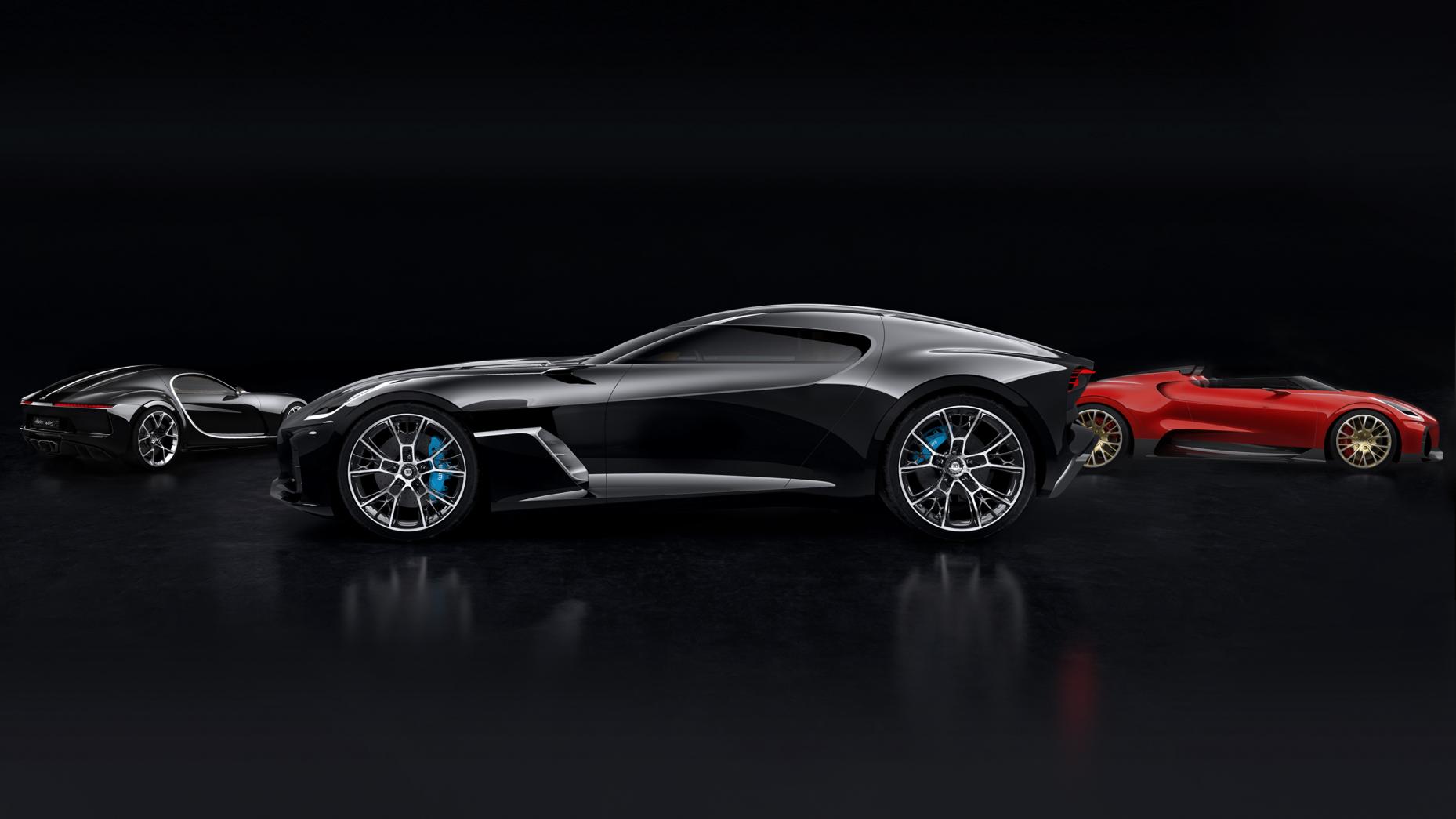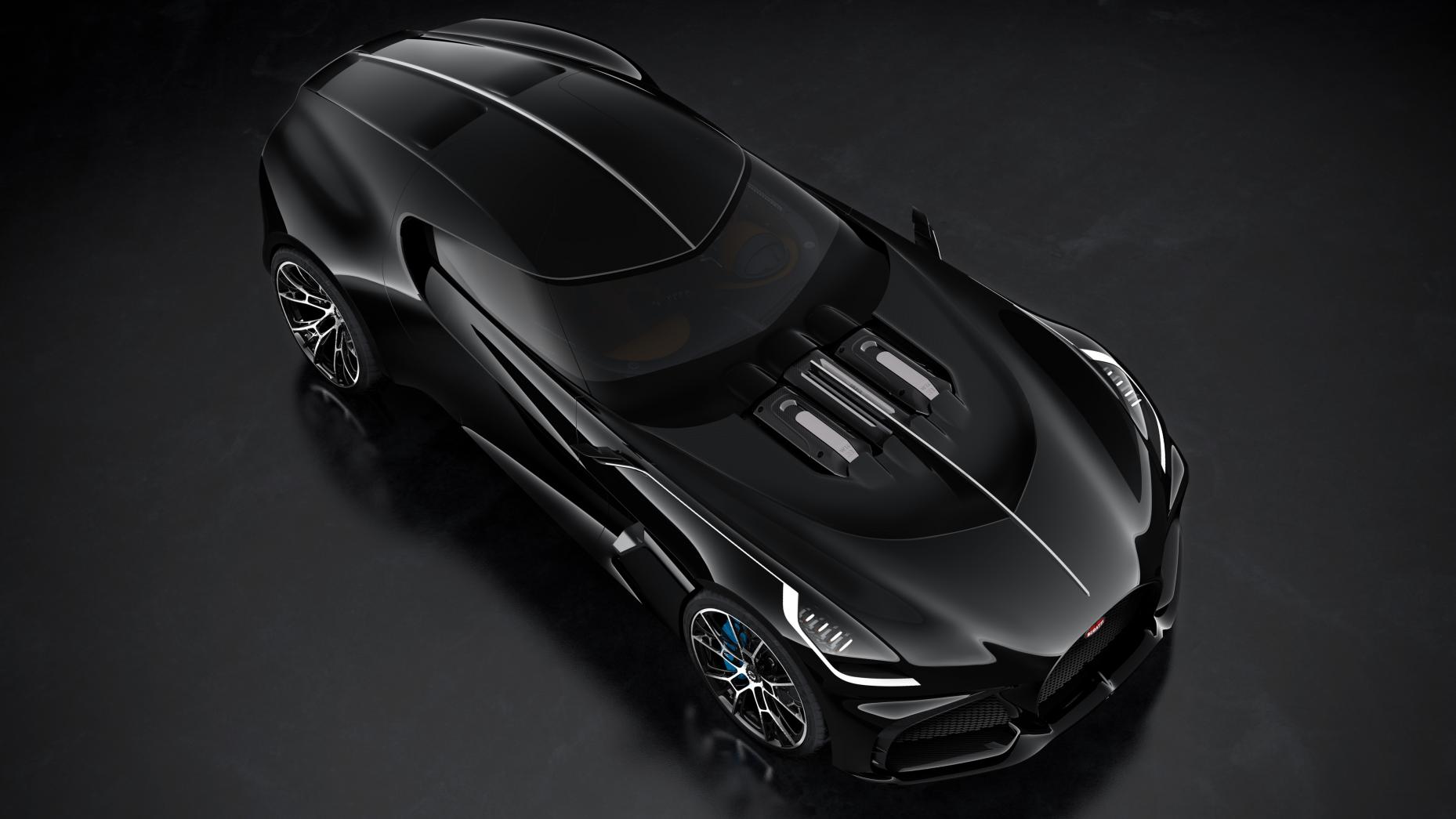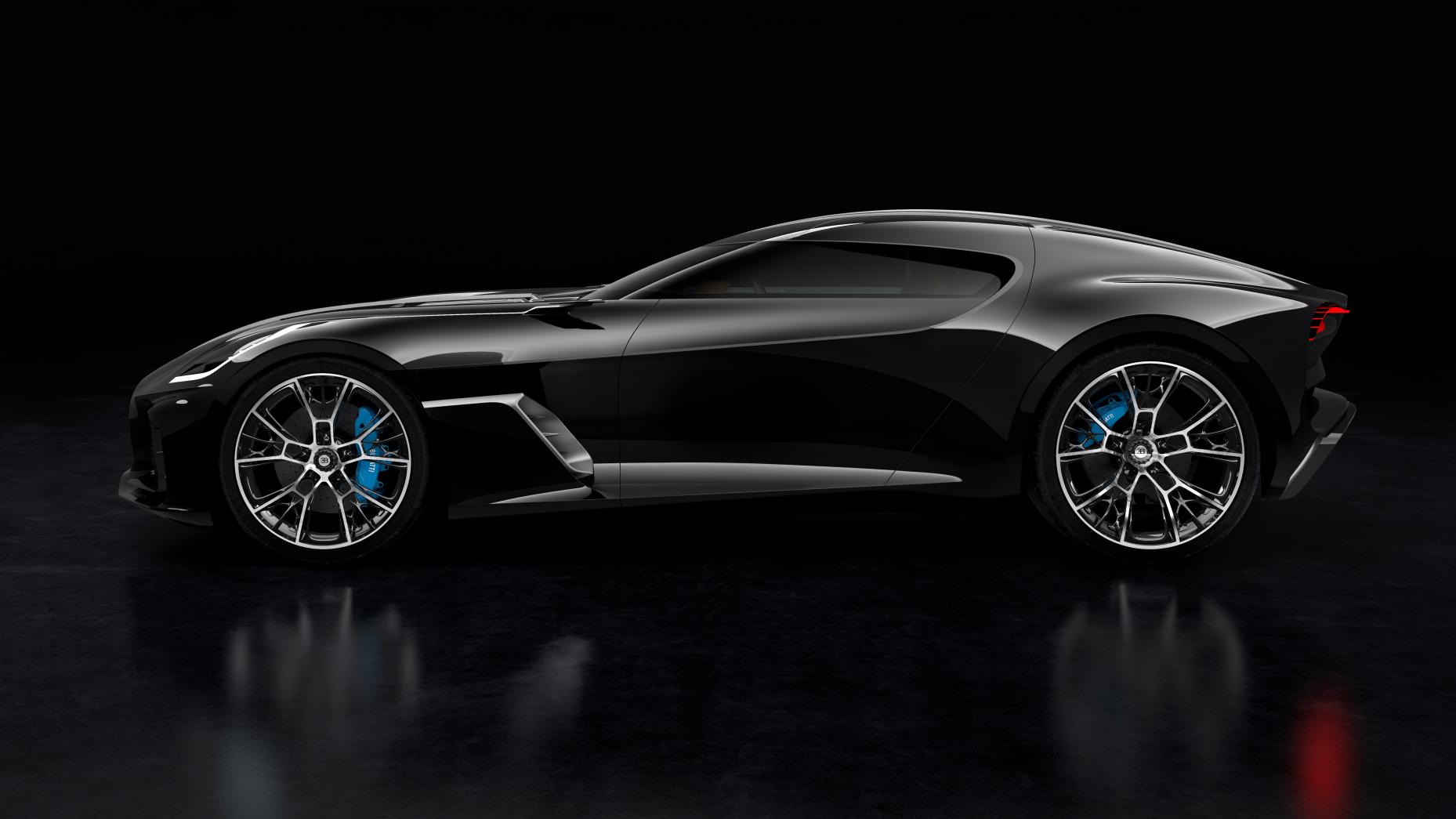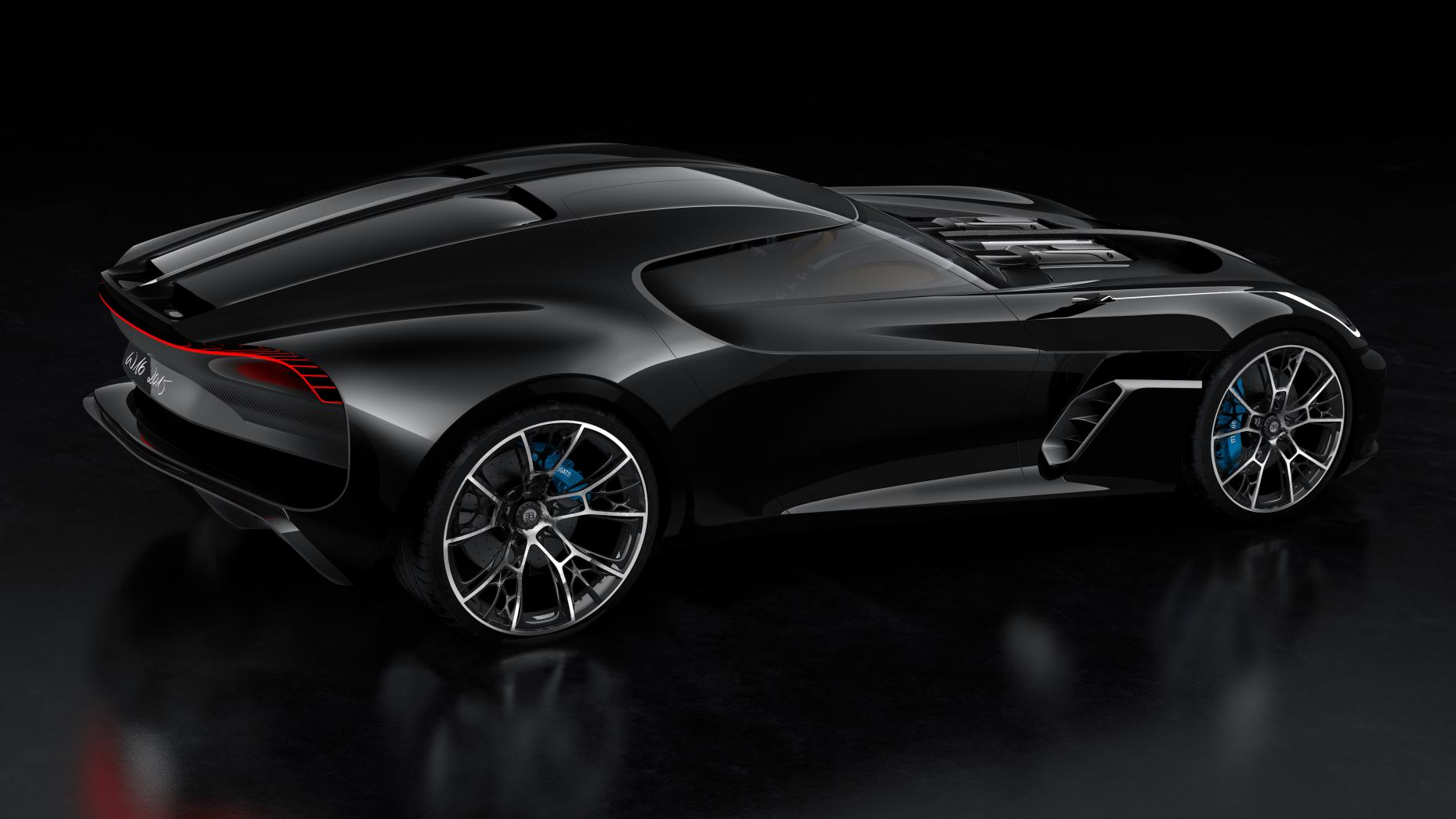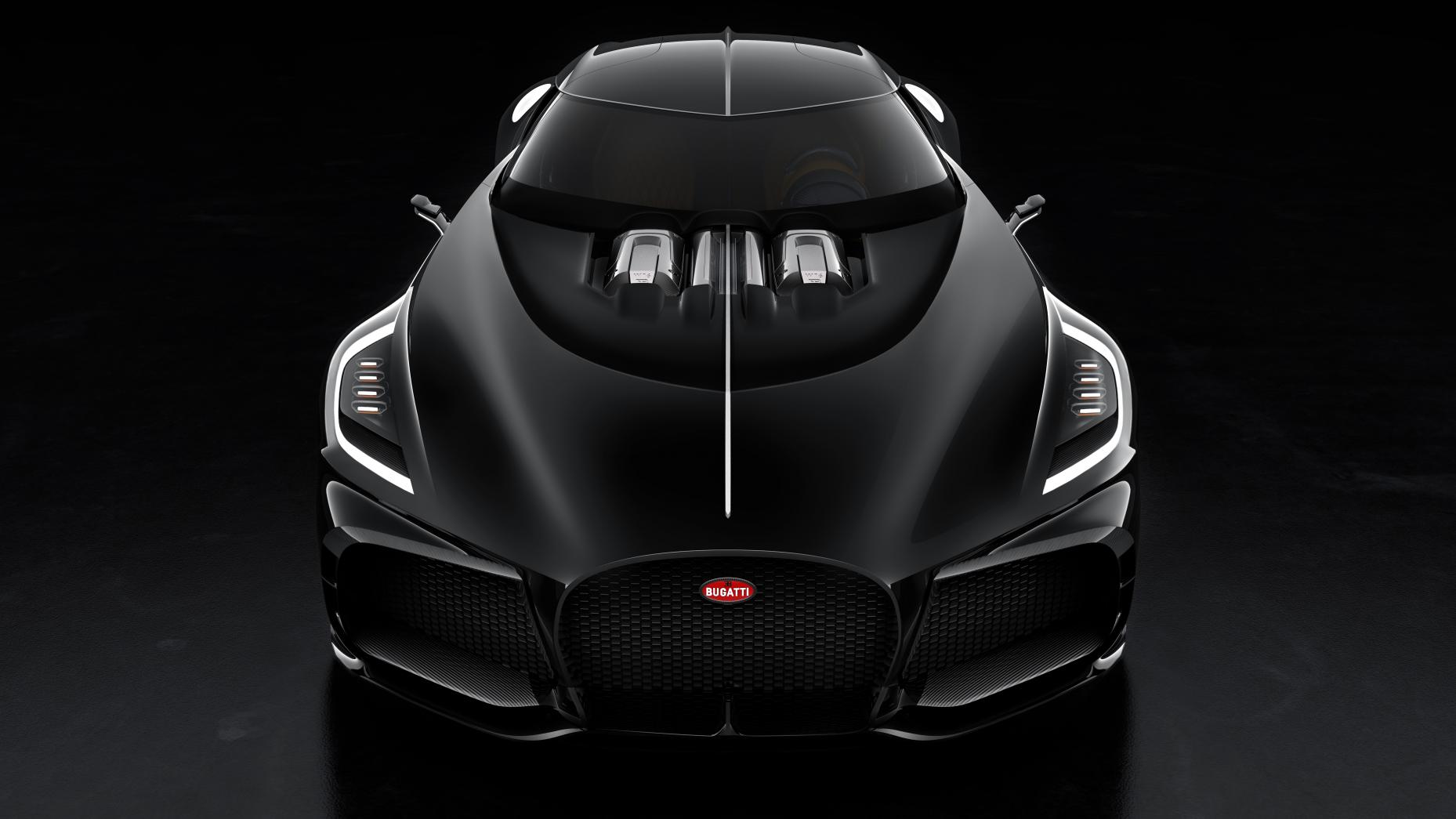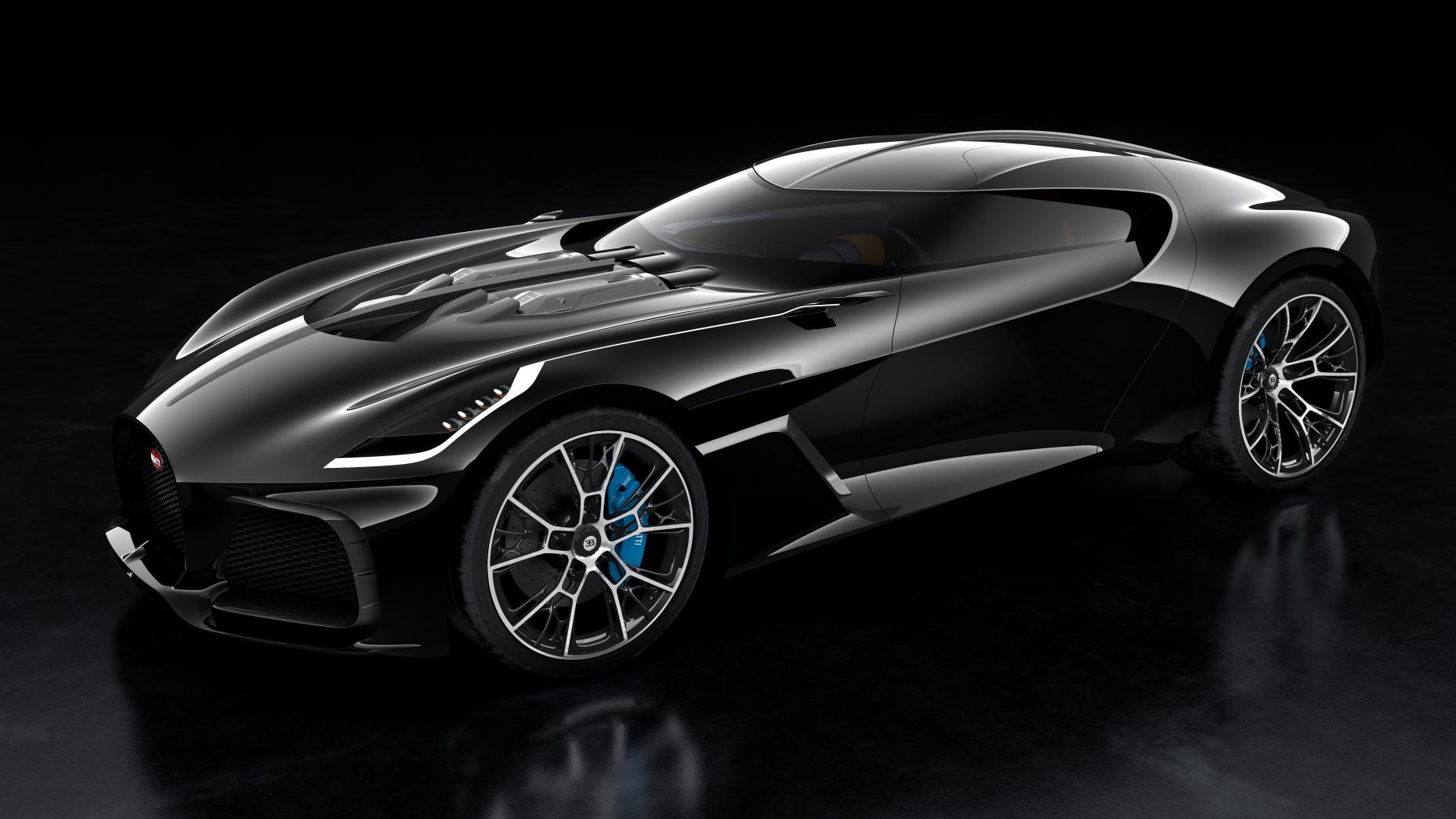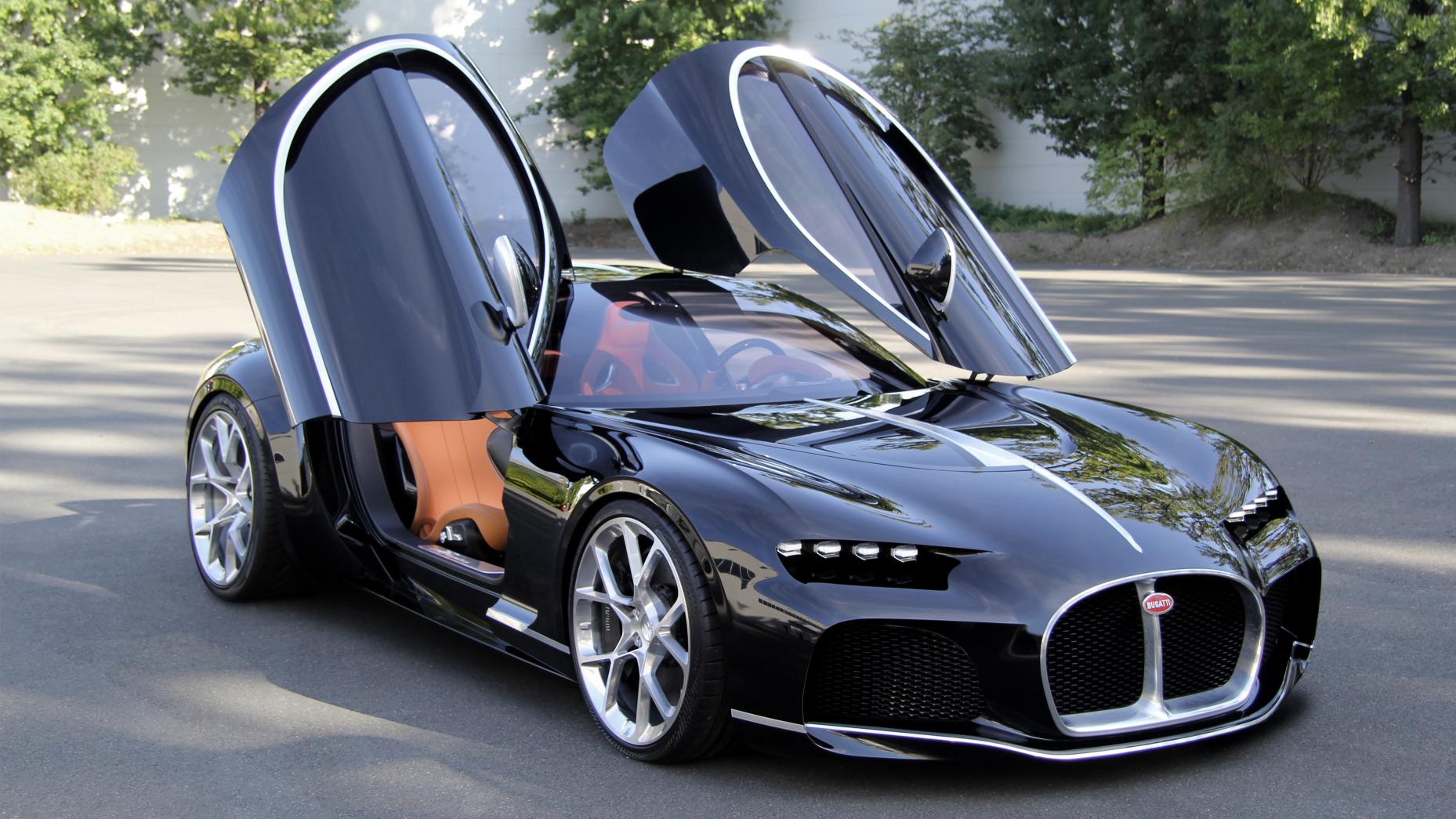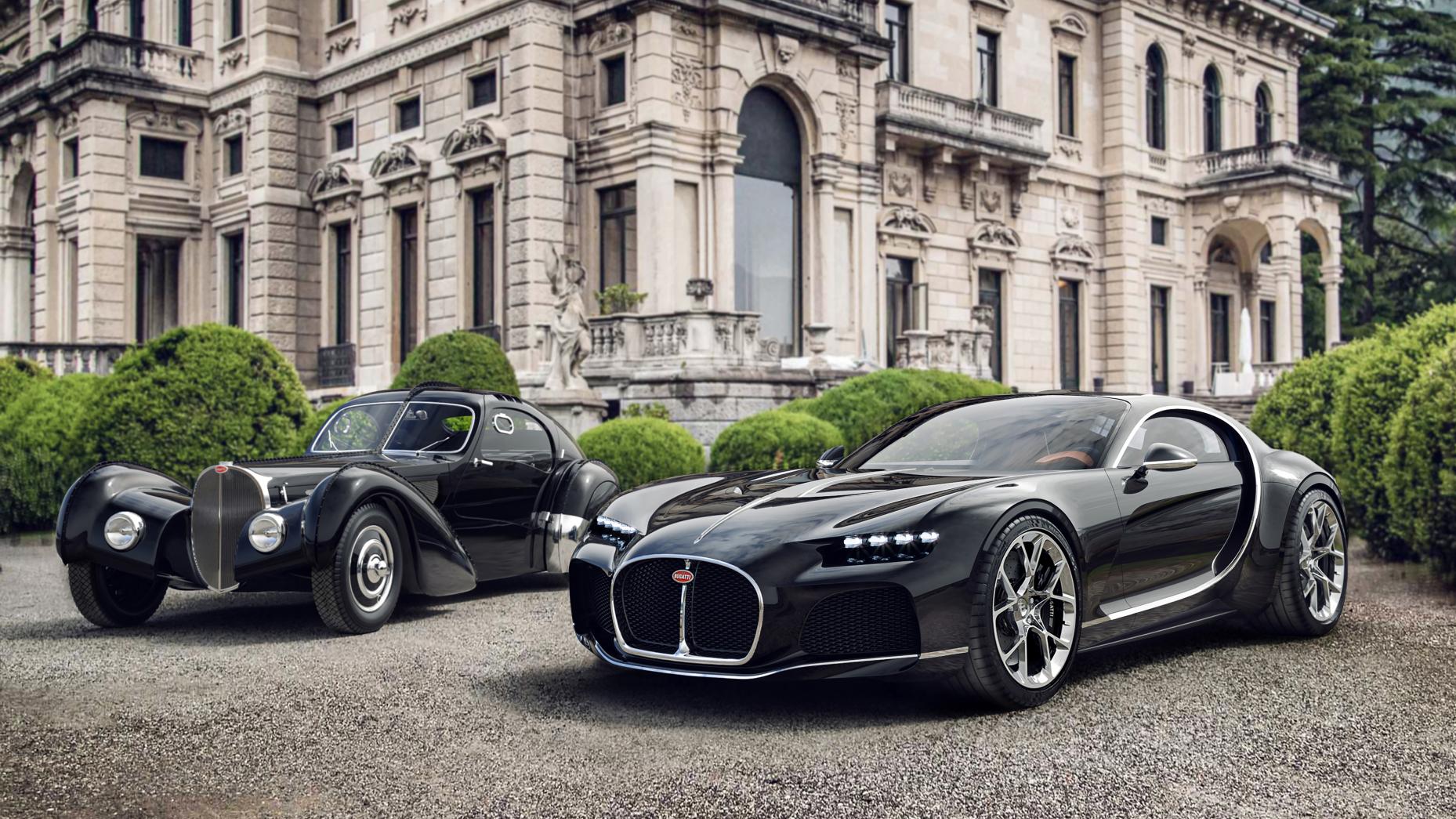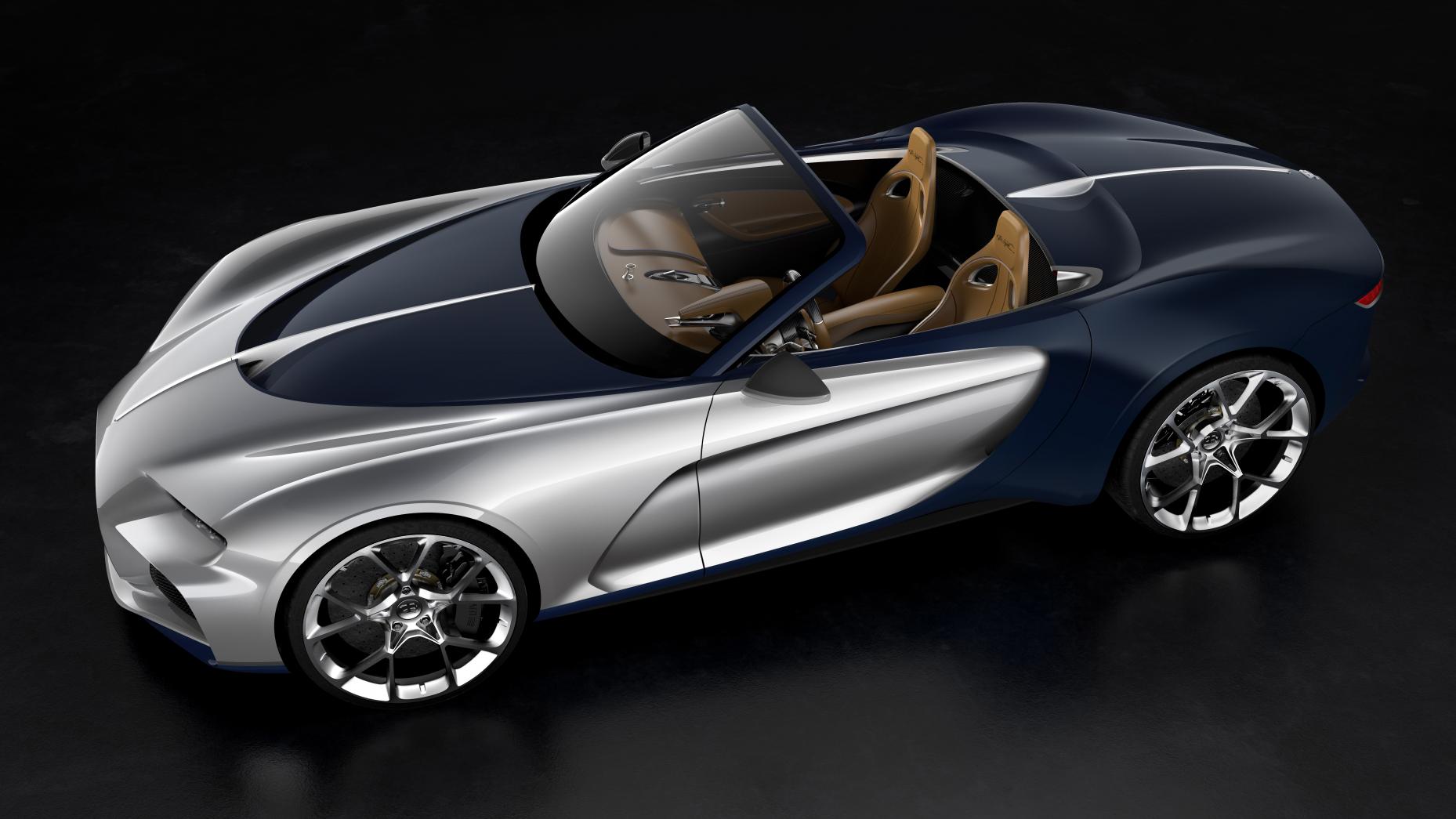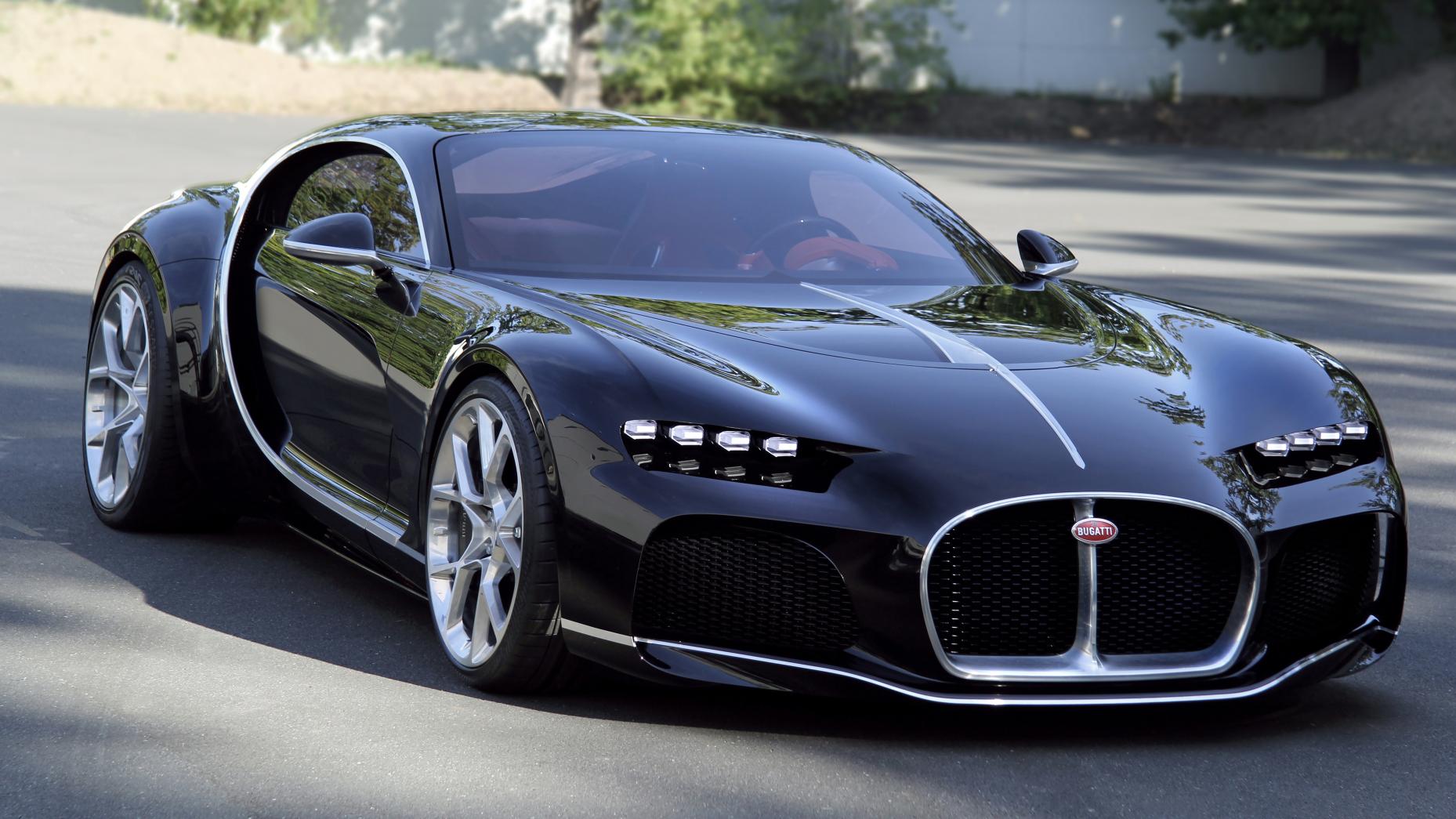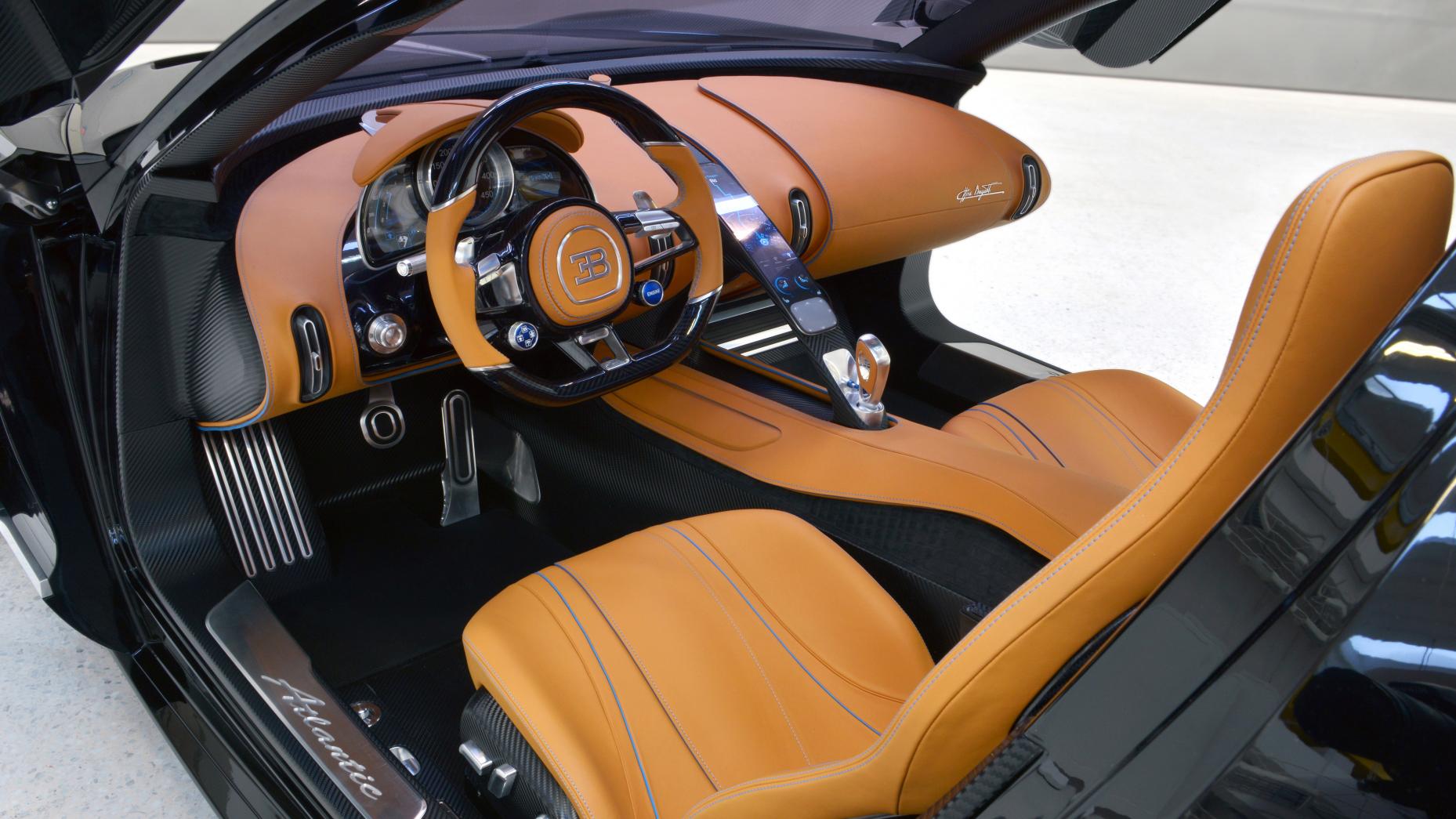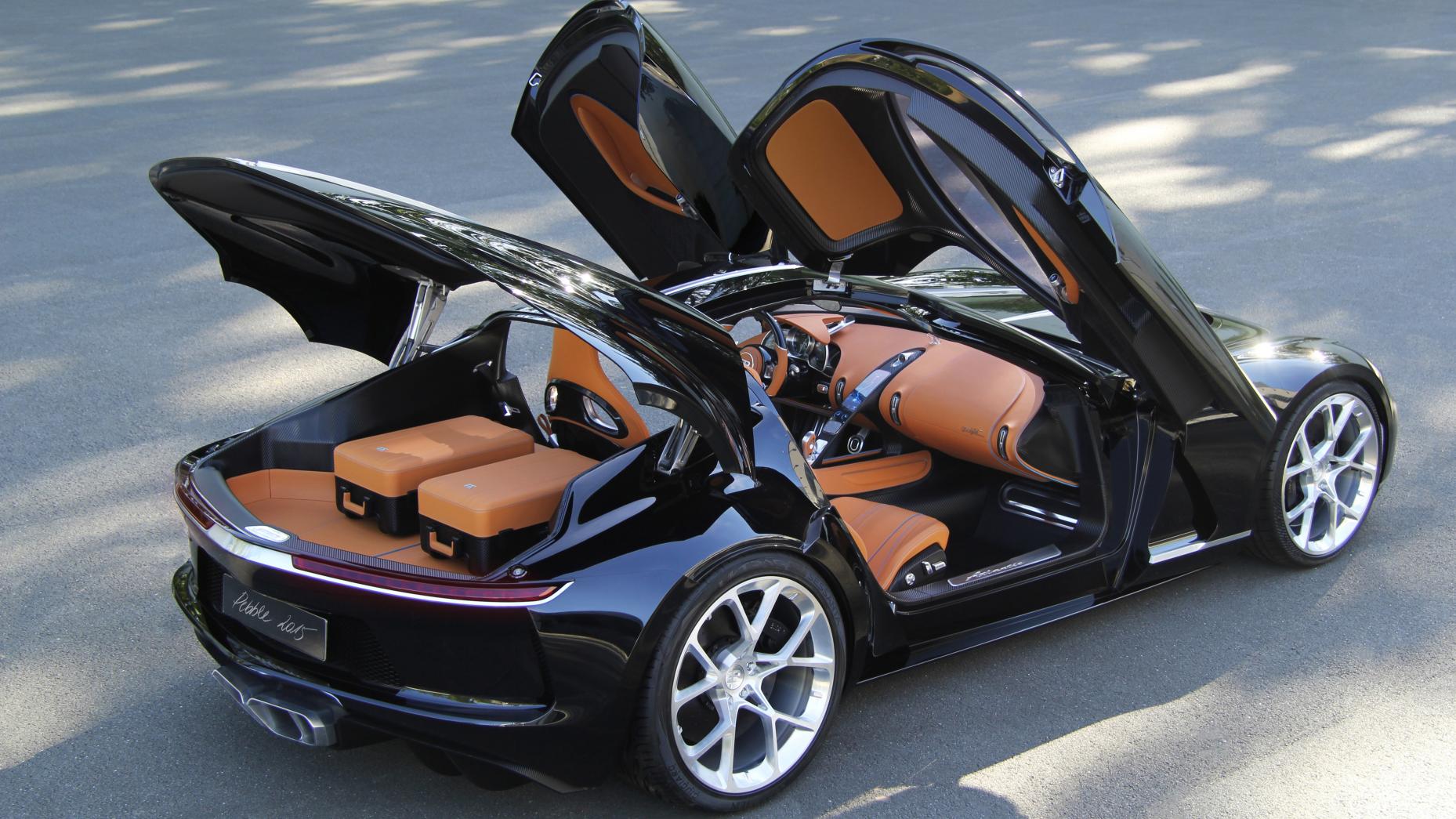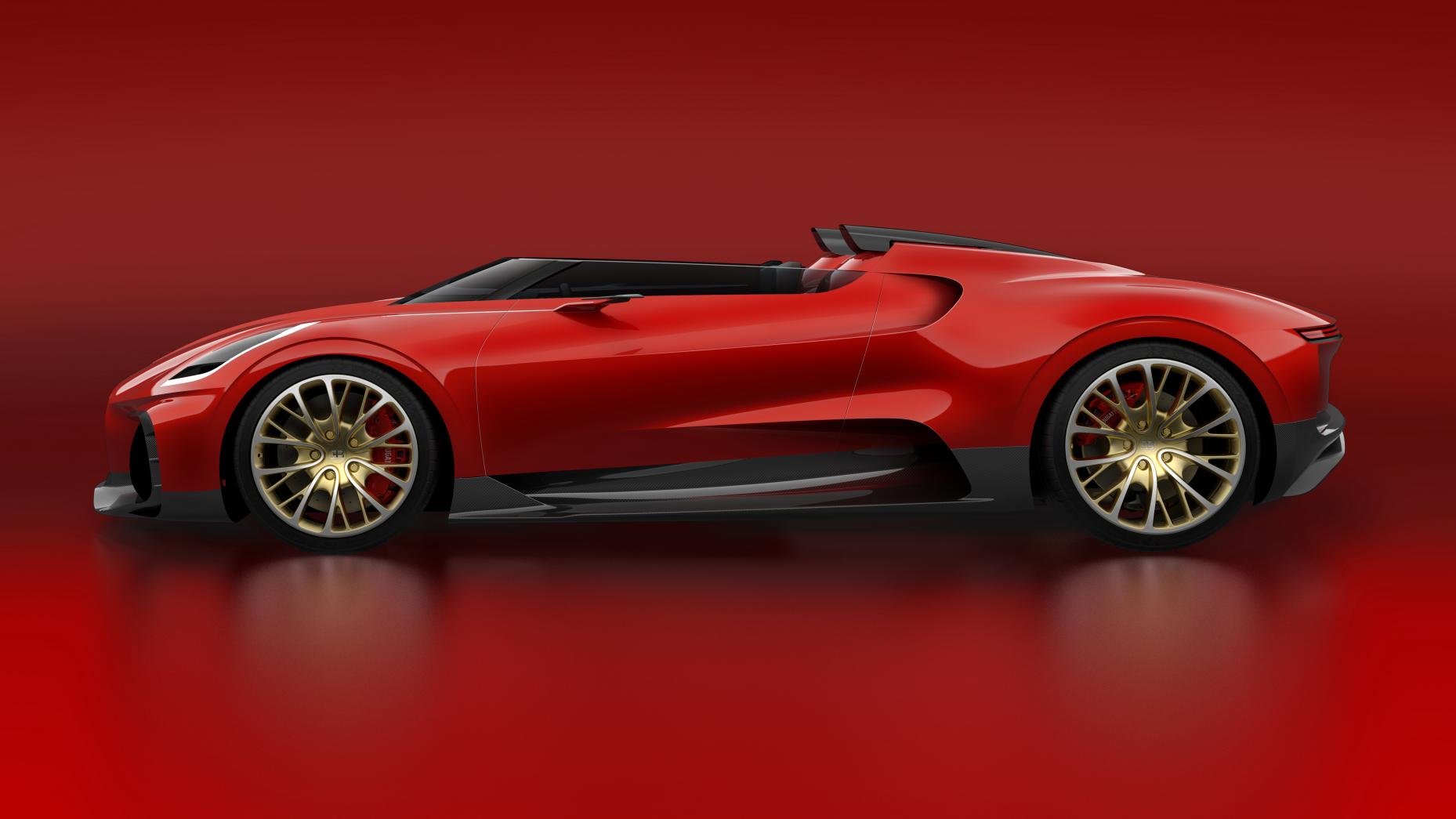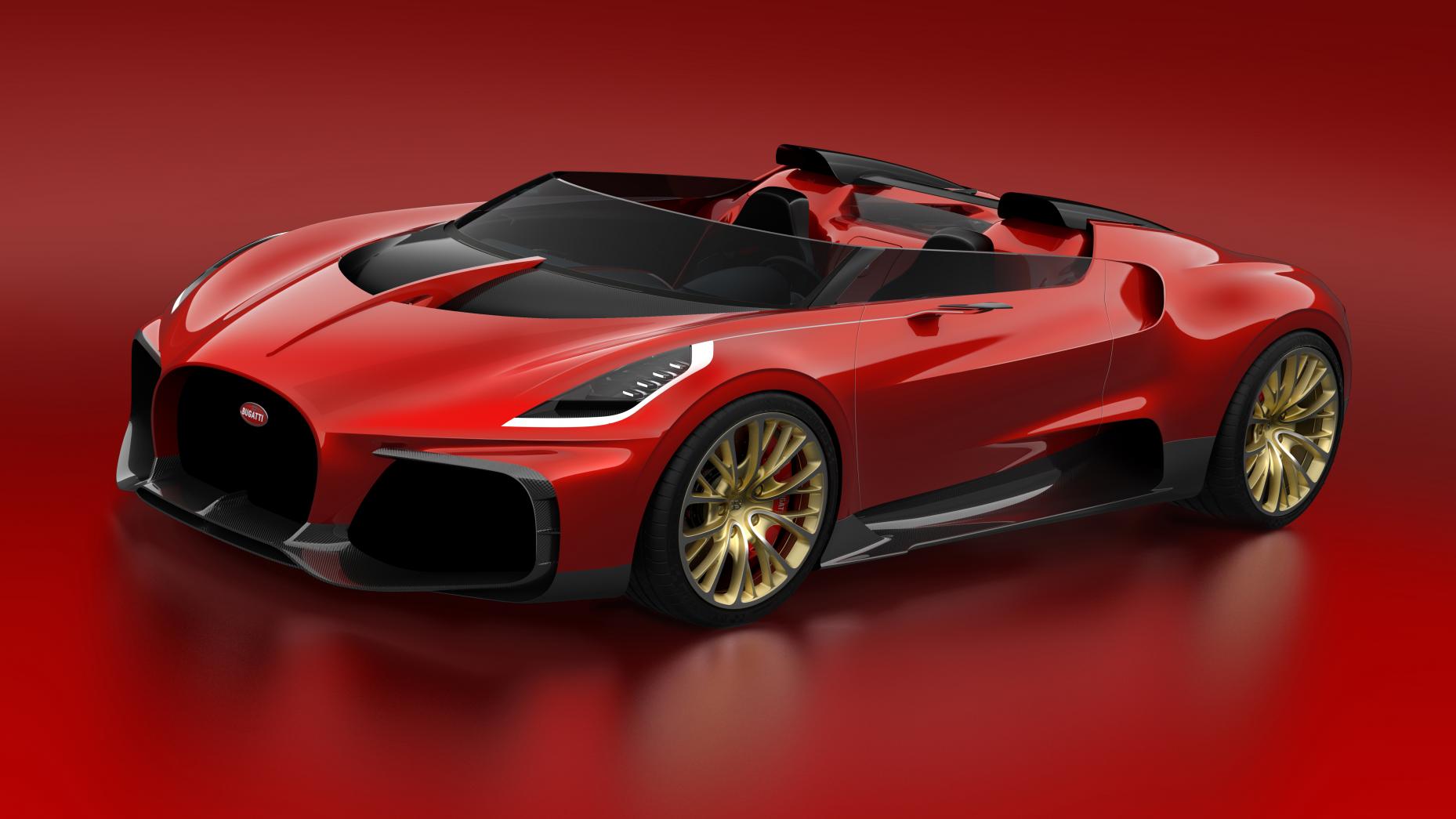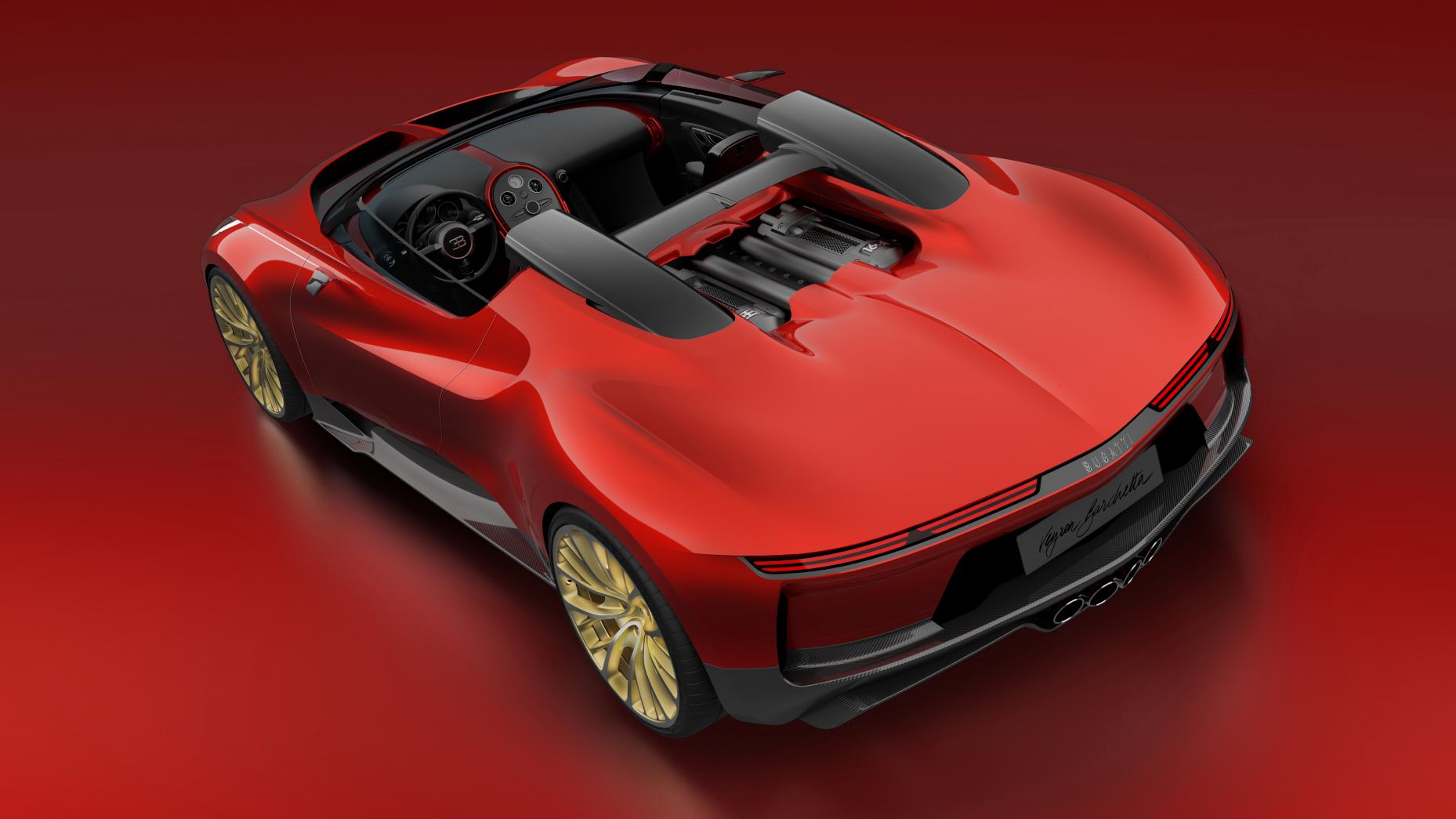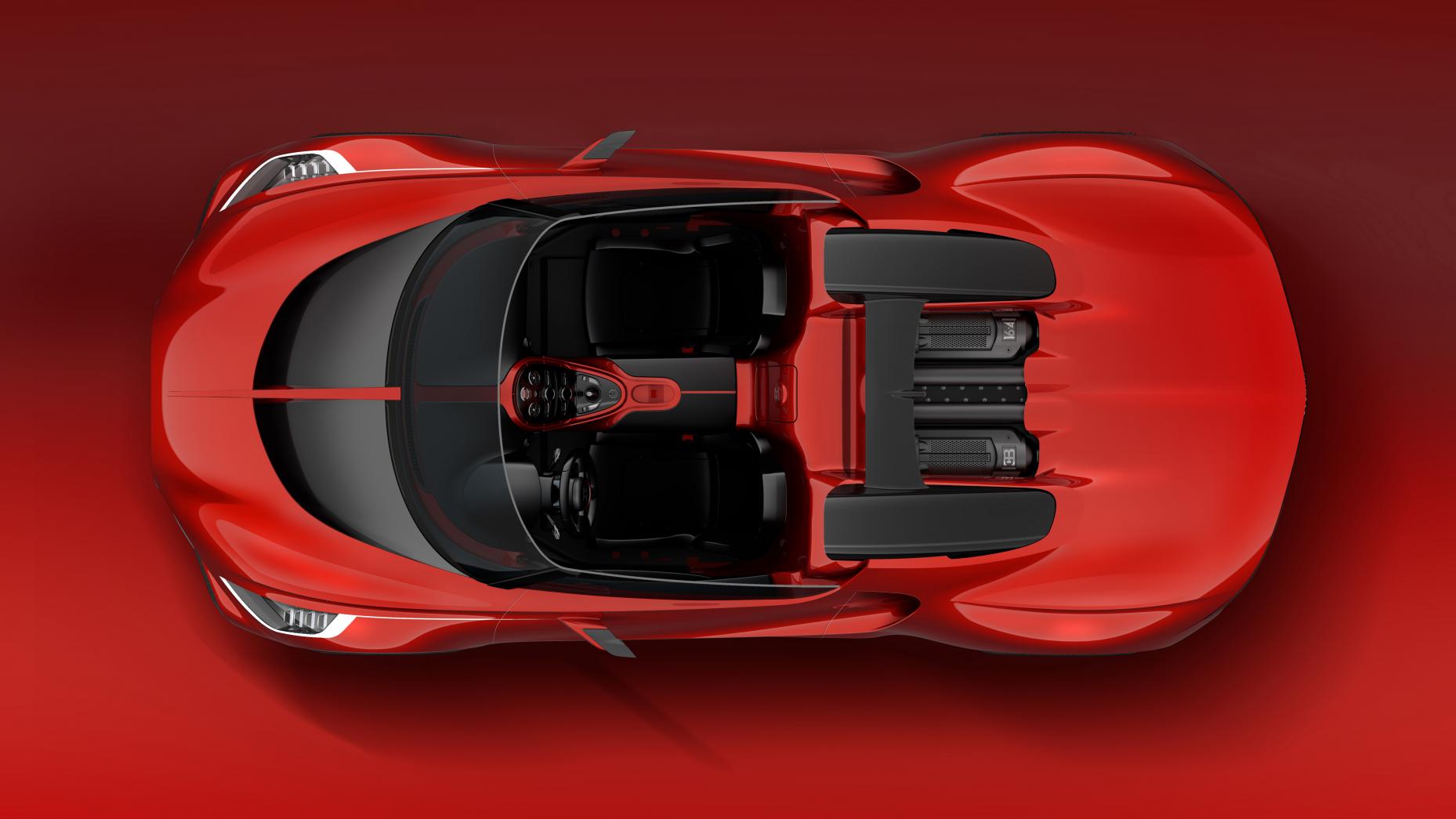Gallery: These are Bugatti’s secret concept cars
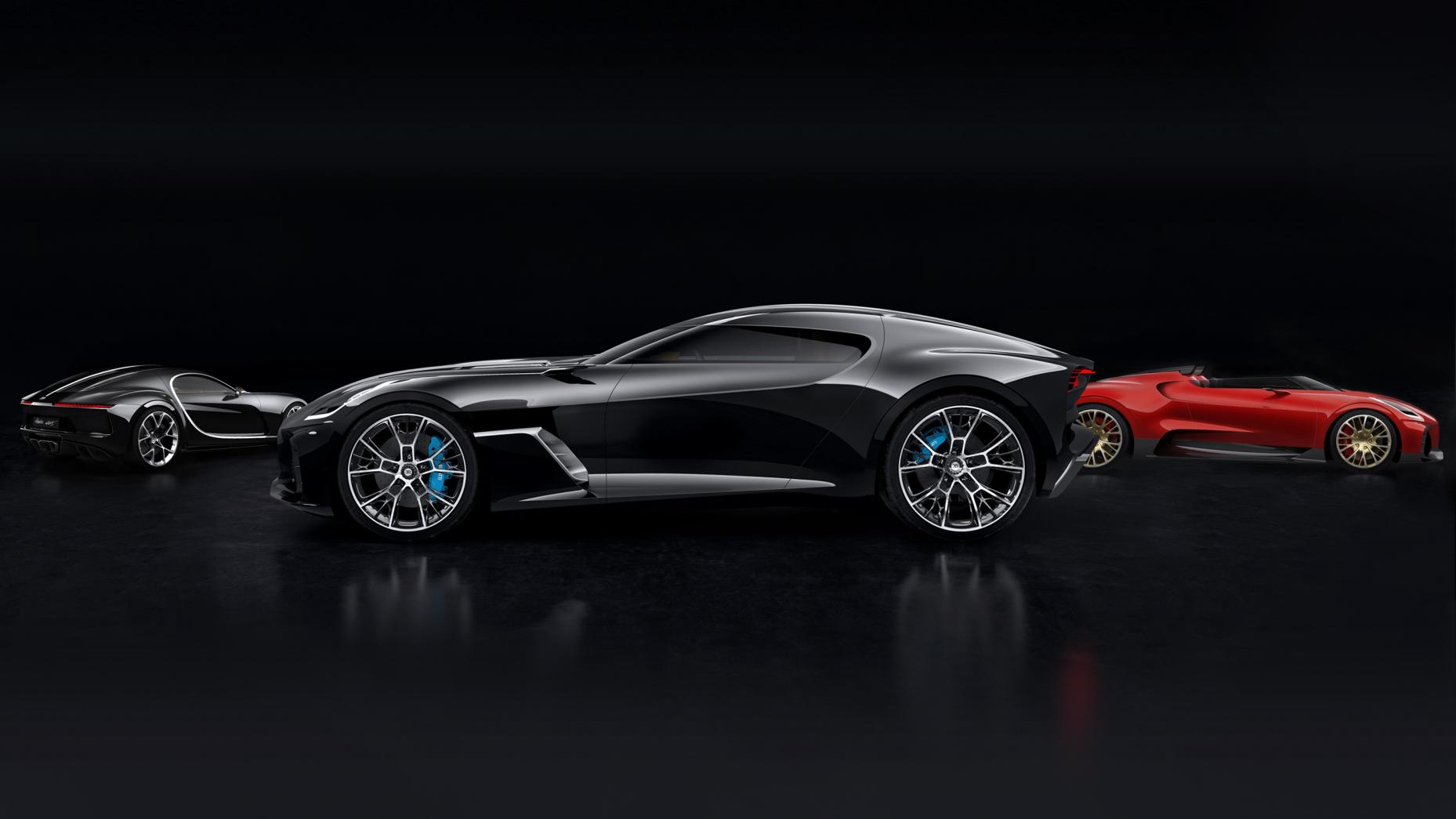
Warning: what you are about to see are not some bored teenager’s bedroom renderings. They’re not fantastical photoshop trickery made of fairy dust and dreams, either. These are actual Bugatti concept cars that its design team poured blood, sweat, money and business cases into making happen, but which – for various reasons – never came to fruition.
There are three cars to feast on; the super-exclusive near-1500bhp, front-engined W16 GT “Rembrandt” concept that’d sit above the Chiron in the Bugatti pecking order, 2015’s Atlantic show car that’d see the niche manufacturer enter a volume market, and the Veyron Barchetta – a Veyron speedster that predated the chop-tops that are currently in vogue by nearly 12 years. So click on for more info on each one. Then let us know which one should’ve been made below. Our answer is simple: all of them.
This is the ‘Rembrandt’. And what a fantastic name that is. Mean-looking thing isn’t it? Just as it should be. See, Bugattis have always been jewels in the automotive crown. Actually, if we want to butcher that analogy, this W16 GT concept wouldn’t just be the jewel, but the whole crown. The Imperial State Crown of Car World.
Described by Bugatti’s design director Achim Anscheid as a ‘Gentleman’s Express’ (jeez, that sounds cool as well, doesn’t it?), the Rembrandt is a front-engined, 8.0-litre, quad-turbocharged W16 luxury sled for crushing continents in comfort.
As you may have noticed, it has visual similarities to the ‘La Voiture Noire’ – last year’s £12m (RM64.74m) Geneva motor show star and the most expensive new car ever.
Low, long and angry, its extended wheelbase, short overhangs and that accentuated Bugatti Line make for thuggish proportions that are both a bombastic and elegant in equal measure. But it’d have off-the-scale performance to back up those sinister looks. Largely thanks to that giant anvil of power up front, the near-1500bhp quad-turbo W16 from a Chiron.
See, the Rembrandt takes on from where 2008’s Bugatti 16C Galibier left off. Well, if VW’s internal management shuffles and the a*se of the financial world didn’t fall out, that is. But the principle is the same as 12 years ago: that of utilising the Veyron/Chiron’s powertrain, flipping it around and shoving it up front.
The exposed engine (not too dissimilar to a Corvette ZR1 and for the same reason: cooling) would power all four wheels in order to puncture a new hole in the market for people that desired a luxury limousine with much sportier credentials than that of a Rolls-Royce Phantom.
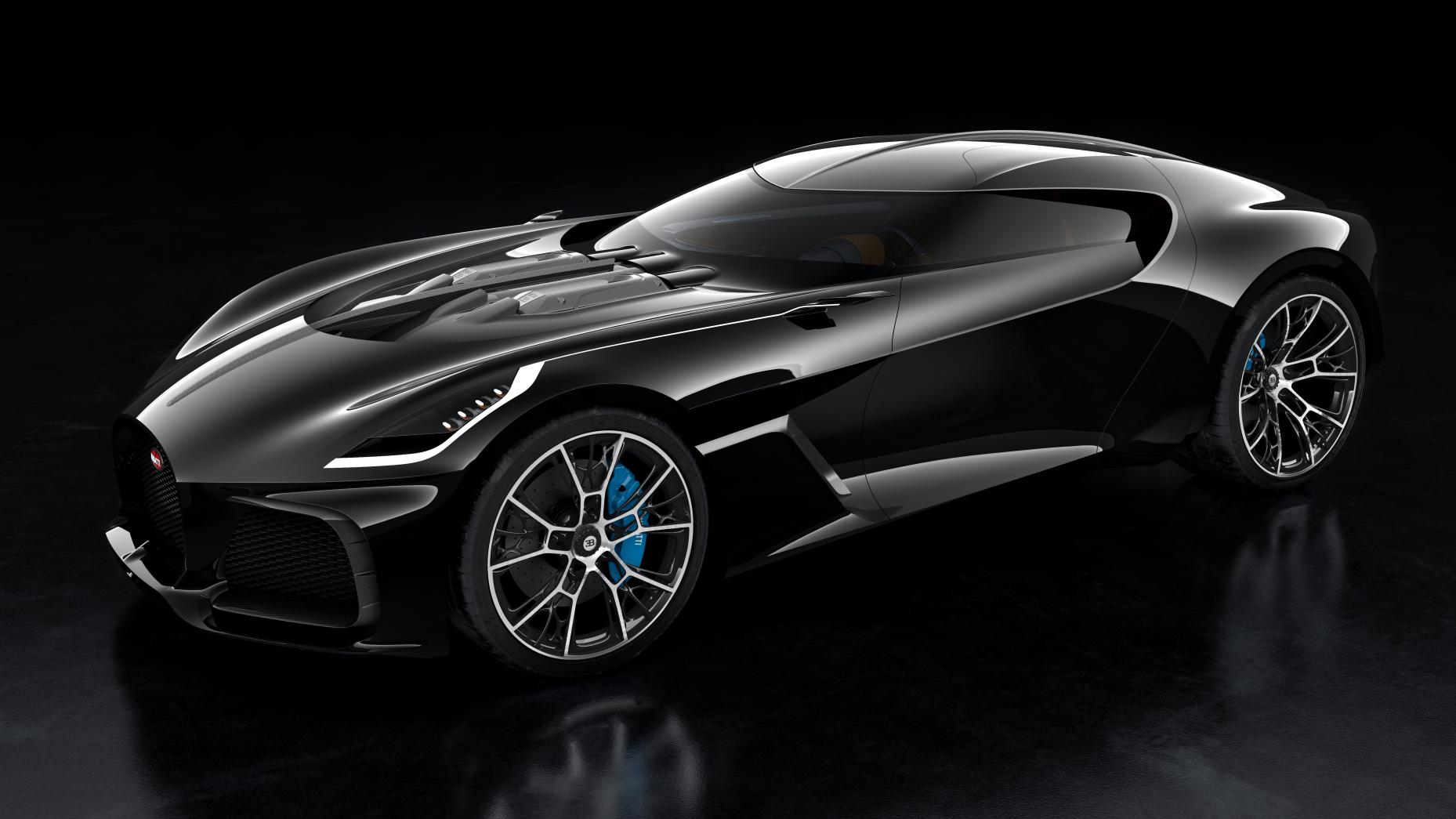
As you can see, it’s a two-door. But it could also be a fastback four-door like the Galibier. We say could because making this slab of excellence happen would require a whole new and extremely dedicated engineering team. One that would forgo any VW Group part sharing as there simply aren’t the parts in the bin to make a W16 GT cruiser. So they’d have to build a completely new car from the ground up.
With 100+ engineers needed to build one, it’d more akin to a motorsport outfit, rather than your normal manufacturer. Which is expensive. But Bugatti believes there will always be people that want exotic approaches and mechanical solution and people are willing to pay for that effort and exclusivity. So a car like this could warrant a price tag of up to £50million (RM269.64million), and be limited to a handful of cars, possibly one car per continent.
But, as Bugatti’s head honcho Stephan Winkelmann has previously alluded to, the hyper exclusivity of a car like Rembrandt would be neutralised by a more volume-centric model. This could’ve been the car to fill that void… years before Winkelmann took the reins at Molsheim.
It’s a show car from 2015 that was destined for Pebble Beach if the whole Dieselgate thing didn’t happen. And it would have been an incredibly significant bit of punctuation in Bugatti’s rich history, as while Ettore and his son Jean Bugatti were responsible for a truly outrageous group of cars back in the day, there is one that nudges above the others, for a whole bunch of reasons – the 1936 Type 57 Atlantic. This would have been the modern iteration of the Atlantic.
It’s not some back-of-fag-packet pipedream design either. A year and a half of work went into the car and design to bring something new to the offering. It was built with the internal knowledge of the Porsche’s ongoing Taycan project, then known as the Mission E.
So, Bugatti thought it’d piggyback on the technology – offering the Atlantic with either a smaller displacement internal combustion engine than a Veyron (more than likely a twin-turbo V8) as well as an electric drivetrain and as a coupe or roadster.
Again, making a statement with the Bugatti Line, the natural proportions of this front mid-engine layout makes it quite a lot more elegant than that of a mid-engine Veyron/Chiron. Mainly because the line can be exaggerated and shoot down and round the body before firing forwards emboldening the outlandish dash to axle length, just like the original Atlantic Type 57.
And check out the fit and finish of the show car. That shows its intent. This wasn’t meant to be some concept tease; it’s all proper switchgear that has very, very similar look, feel and DNA to a Chiron. But remember, this is from 2015.
Just like the fastest car in the world, there’s a narrow centre console (this time with a Porsche 918-esque touchscreen), a gear lever akin to the Chiron and four air con dials, each beautifully machined. What else would you expect? You may also notice the same twizzly knobs on the steering wheel, and a similar analogue speedo surrounded by digital TFT screens.
Behind the seats, a shelf for very leathery luggage – a reminder that this thing is to do miles in. And check out those doors.
Doors – in their simplest form – are mere hinged slabs that open to allow things inside to escape outside. They also close to keep out the likes of wind, rain and verbal abuse. But when attached to cars, doors have the potential to become a piece of theatre. And the folks at Bugatti obviously know how to make a statement. Whether they’d ever make production, unfortunately, we’d never find out. But that doesn’t mean it can’t in the future.
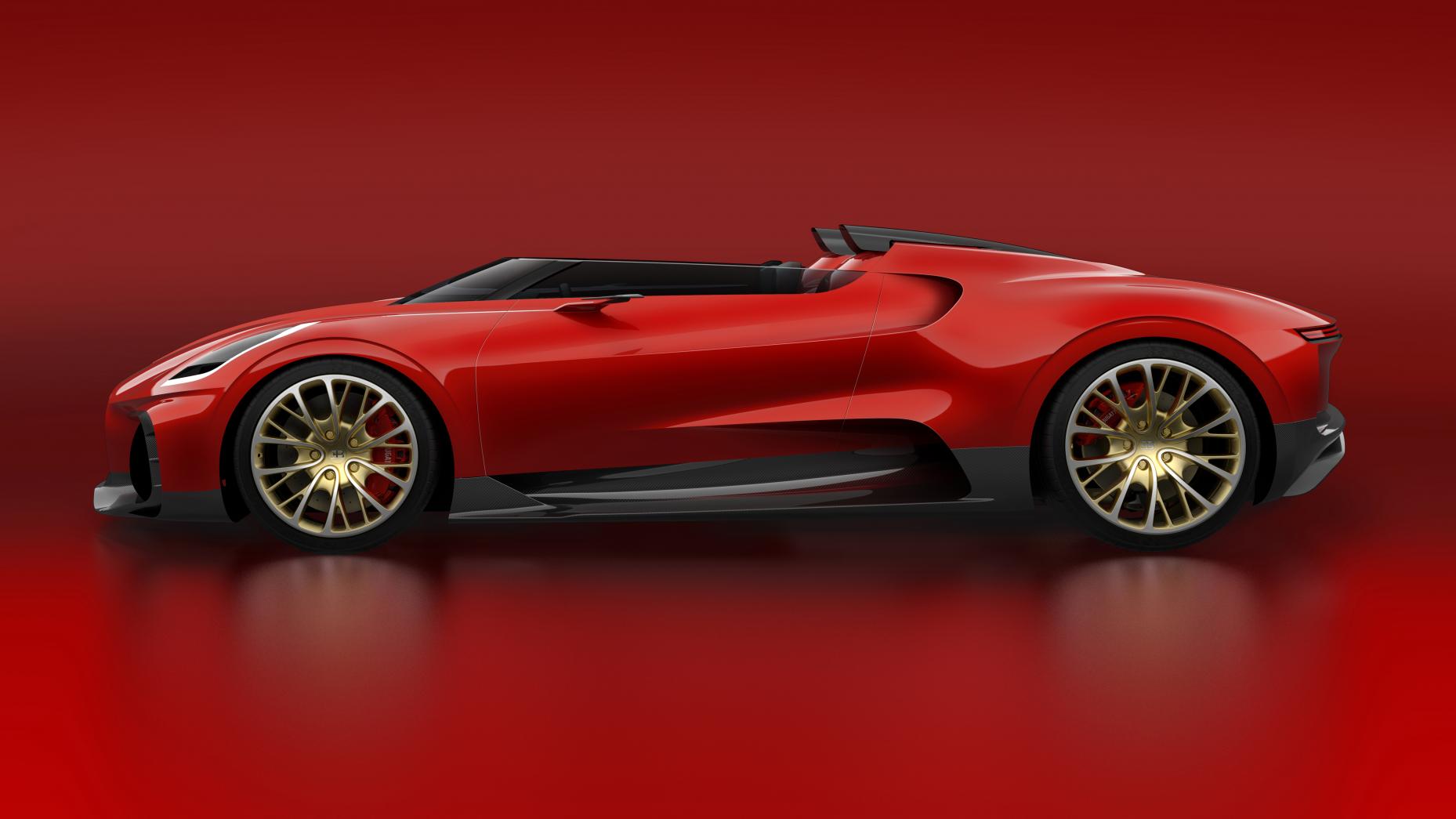
Finally, we have this. The most outlandish but forward-thinking crystal ball concept (when it comes to the current zeitgeist) of the three: the Veyron Barchetta.
Yes, you read that right: Veyron. This is actually a concept from 2008 and predates the current flurry of speedsters that we’ve seen from Ferrari, McLaren and - soon to join the party - Aston Martin. It was one of the first coachbuilding proposals by Achim Anscheidt, ten years before Stephan Winkelmann joined Bugatti.
Being built off a Veyron 16.4 Grand Sport Vitesse (the targa top version of the Veyron Super Sport) gave the design team the freedom to give the roadster a more extreme haircut, making a high-speed chopped ‘screen speedster out of the Chirons father.
But with the culmination of internal politics and 2008’s financial crisis, the concept was never pursued. Something that in hindsight may have been seen as a ‘doh!’ moment.
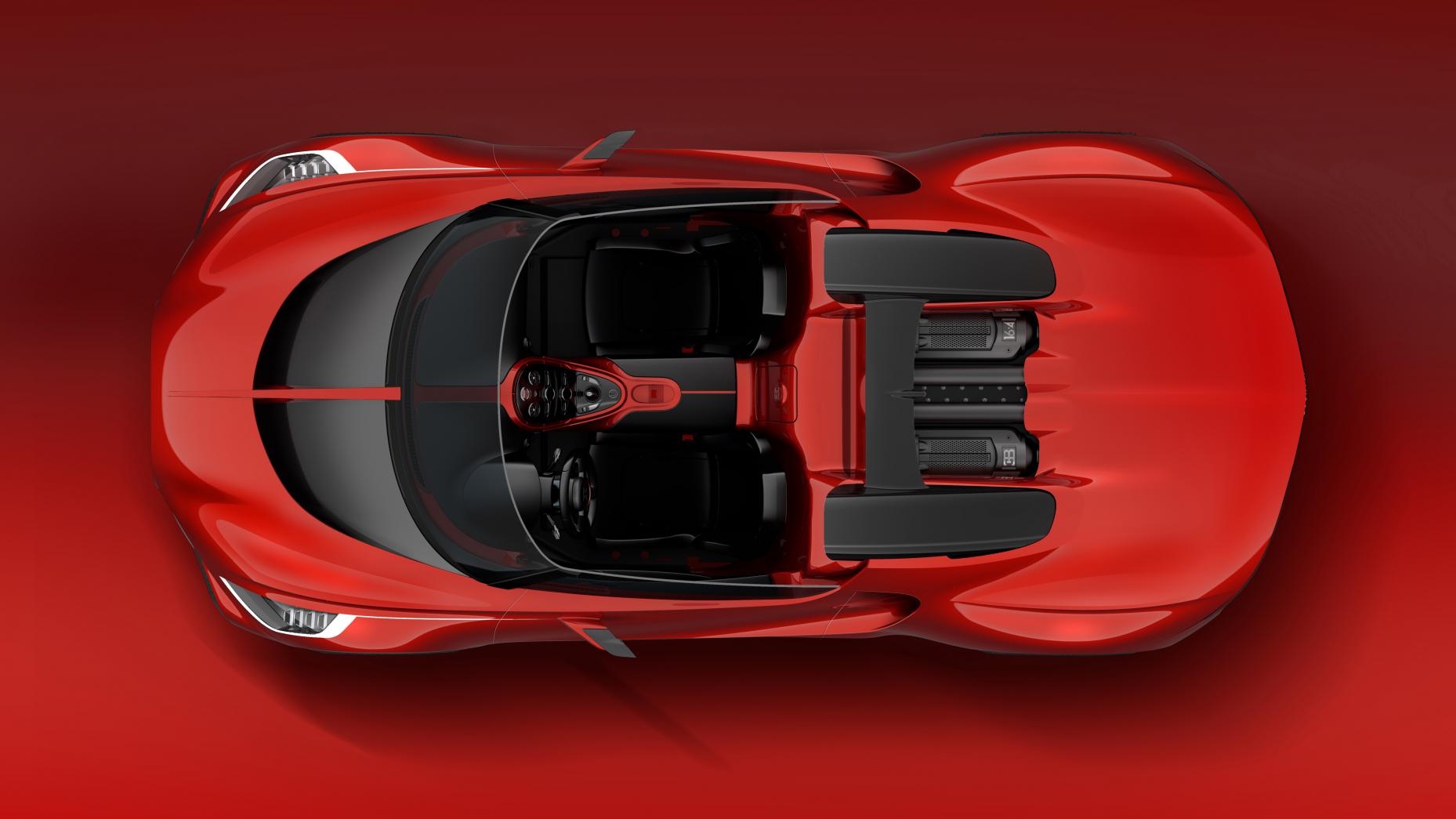
But with the departure of Wolfgang Dürheimer, Bugatti got its new CEO, Winkelmann – the man responsible for a myriad limited-edition cars at Lamborghini and not afraid of book balancing one-offs. And he’s brought this thinking to Bugatti with it recent coachbuilding projects.
Winkelmann has given Bugatti’s design team the creative licence to divulge in the recent spate of modern-day coachbuilding from Bugatti; the Divo, La Voiture Noire, Centodieci. So surely with the design shackles slackened off and an obvious desire for this type of car, we’ll see a Chiron Barchetta in no time?
Wrong. The Chiron was never developed to be a roadster, so there isn’t the chassis to build from. So this is one that may have to stay in the dusty old designs drawer forevermore. Shame.
